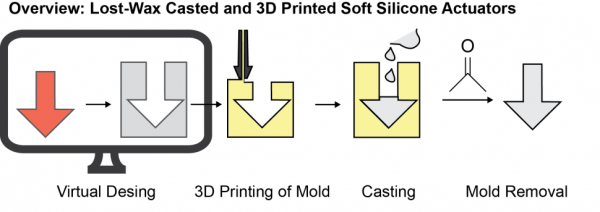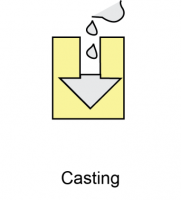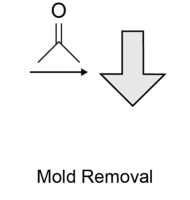This section contains a detailed description of the fabrication process to manufacture combustion-driven actuators (CDA). One of the key features to produce lost-wax casted soft silicone actuators is 3D printing. We therefore explain in more details the principle behind this technique, the importance of the printed polymers and highlight the resulting advantages. We additionally explain the casting and mold removal processes. A detailed Bill of Materials listing all parts and materials needed to fabricate the combustion-driven actuator shown in this documentation can be downloaded here.

Process Overview
| 3D Printing the Mold: After the mold design (see Computer Aided Design section) is established, the data gets processed and loaded into 3D printing software. This software then produces an operation chart, enabling the 3D printer to print the mold. |  |
| Casting: After post-treatment of the 3D printed mold (more details are given in the relevant subsection), a mixture of uncured silicone and its necessary crosslinking agent is pressed inside the voids to cast the mold. |  |
| Mold Removal: The mold around the cured actuator is then removed by dissolving the mold polymer in a solvent. This process frees the final actuator and produces the previously mentioned and very important monoblock structure. |  |
